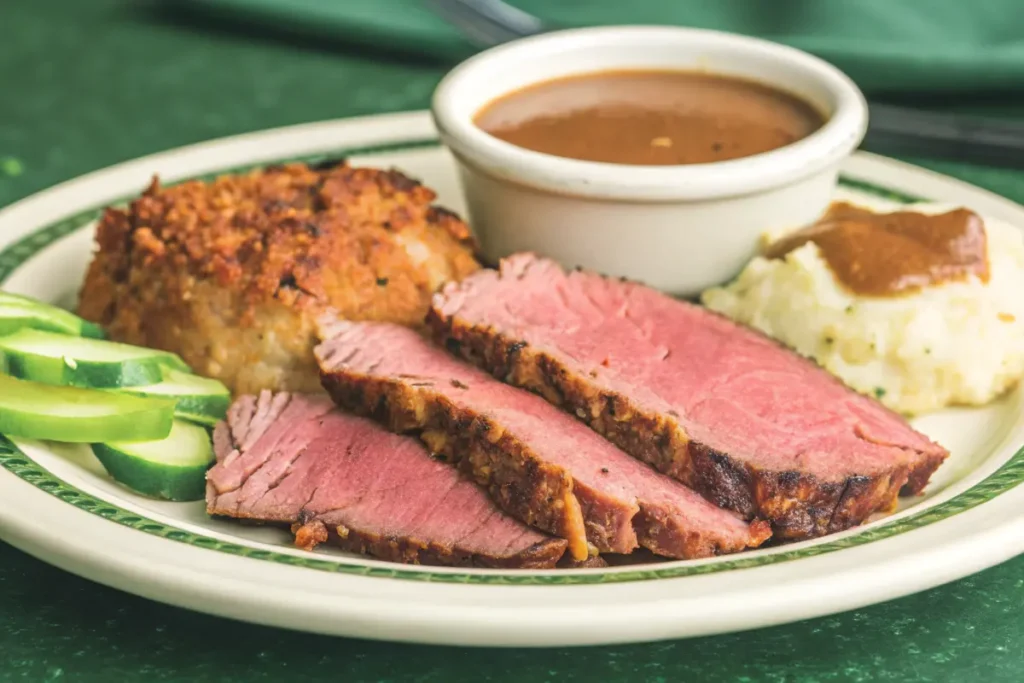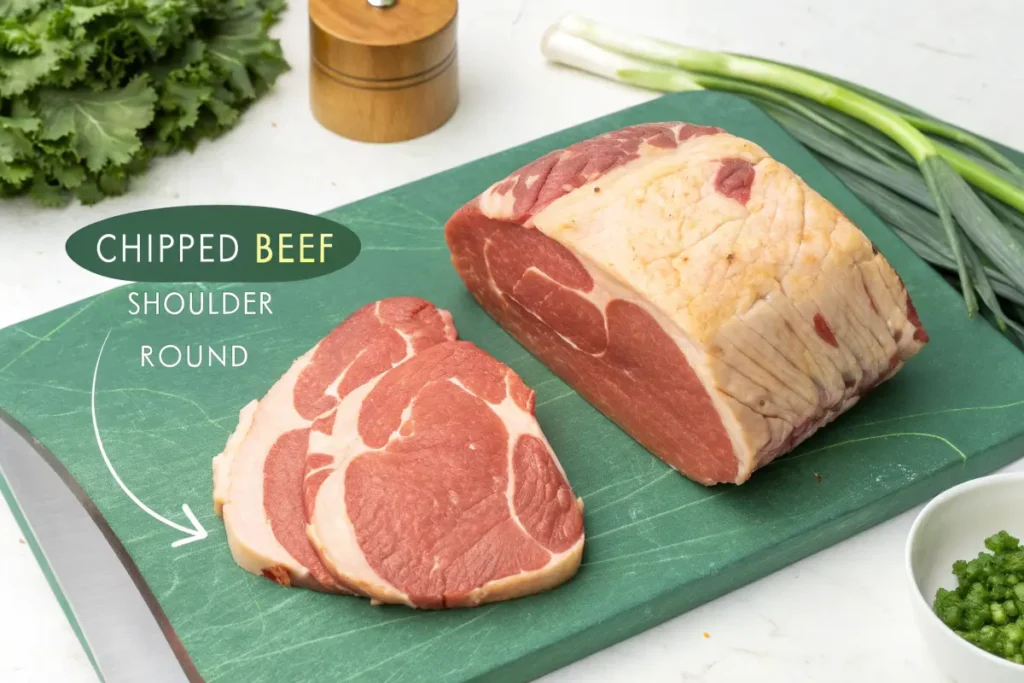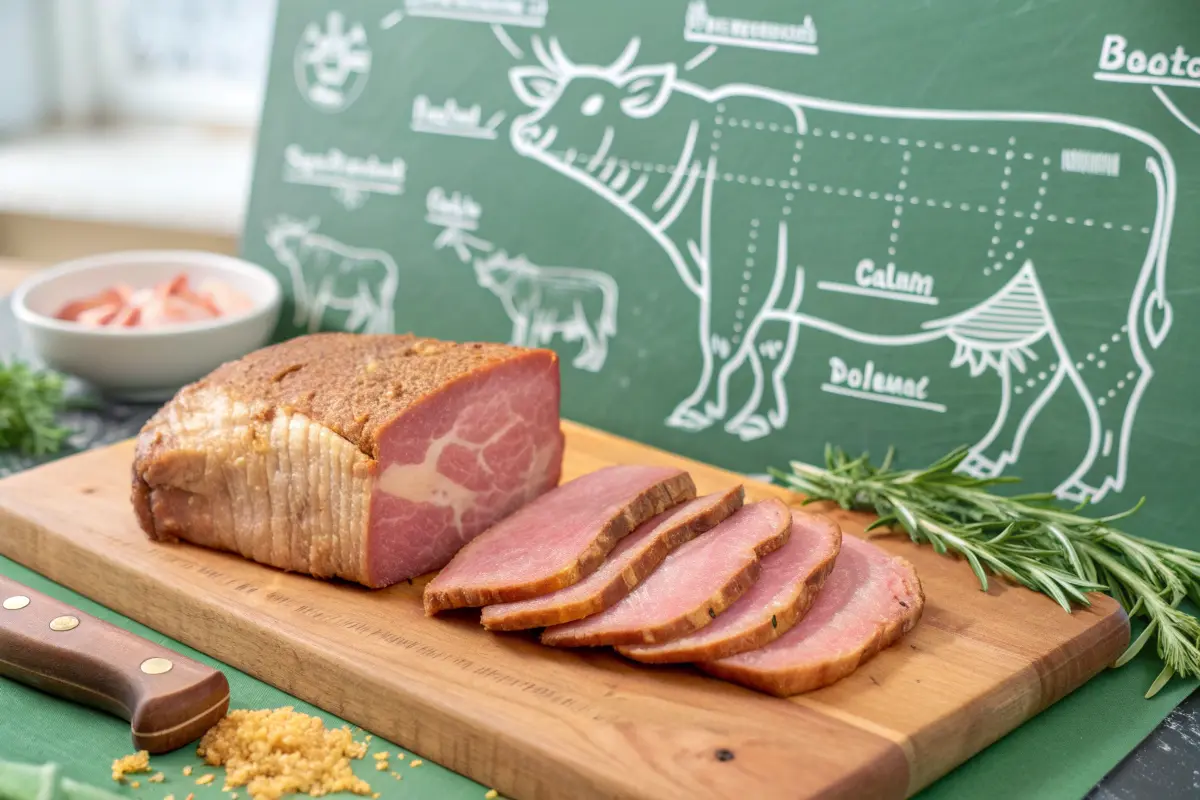Chipped beef has been a beloved staple in many households for decades. But what exactly is it, and what part of the cow does chipped beef come from? This article explores its origins, preparation methods, and culinary uses, offering fascinating insights about this versatile product. Whether you enjoy learning about food history or want to include chipped beef in your meals, this guide provides everything you need to know.
Origin of Chipped Beef
Historical Context
Chipped beef, a culinary staple, has an intriguing history that dates back to the early 20th century, where its practical use made it a kitchen favorite. During wartime, especially in World War I and II, chipped beef gained widespread recognition. Its long shelf life and lightweight nature made it a convenient option for soldiers’ rations. With limited resources available, this form of preserved meat provided a reliable source of protein and calories, helping sustain troops during challenging times.
In post-war America, chipped beef transitioned from a necessity to a beloved comfort food, thanks to its association with simple, hearty meals. One classic example is creamed chipped beef on toast, commonly referred to as SOS (a slang term originating in the military). Its simplicity and affordability ensured that it remained a staple in households for decades.
Cultural Importance
Chipped beef holds a nostalgic place in the hearts of many Americans. For some, it’s a reminder of family breakfasts or quick weeknight dinners. For others, it symbolizes the resilience of previous generations, who made do with what they had. Beyond the U.S., variations of chipped beef—or dried beef—can be found in global cuisines.
- In South America, dried meats like charque share similarities with chipped beef in preparation and preservation methods.
- Countries like India have their own cured meat traditions, such as biltong-style snacks or dried beef masalas.
These global parallels highlight how humans across cultures have developed innovative ways to preserve meat for long-term use, adapting to different climates and tastes. Today, chipped beef has a dual identity: a nostalgic classic and a versatile culinary ingredient.

What Part of the Cow is Used?
Anatomical Overview
When it comes to chipped beef, the specific cut of beef plays a significant role in defining its texture and flavor. Traditionally, chipped beef is made from lean cuts, with the round section of the cow being the most common source. The round is located in the hindquarters and is prized for its low-fat content, making it perfect for curing, drying, and slicing into ultra-thin pieces.
Other cuts sometimes used for chipped beef production include:
- Top round: Known for its tenderness among round cuts, ideal for uniform slicing.
- Bottom round: Slightly less tender but still lean and flavorful.
- Eye of round: The most compact and evenly shaped of the round cuts, perfect for consistent drying.
The lean nature of these cuts ensures that the beef dries evenly during the preservation process. Fatty cuts, such as the rib or chuck, are avoided because their high-fat content can spoil the product over time and disrupt the curing process.
Why Lean Cuts Are Preferred
Using lean beef is essential for creating high-quality chipped beef. Here’s why:
- Curing Efficiency: Lean cuts absorb salt and seasonings more effectively, which enhances the meat’s flavor while preserving it.
- Drying Process: Fatty portions take longer to dry and can become rancid during preservation. Lean meat dries uniformly, ensuring a consistent product.
- Texture and Appearance: Chipped beef is characterized by its delicate, thin slices. Lean cuts produce firmer slices that maintain their structure after drying and slicing.
Understanding the Round Section
The round section itself can be further divided into specific sub-primal cuts, each with its unique characteristics. These include:
- Top Round: This cut is slightly more tender than others in the round section, making it a popular choice for chipped beef. Its uniform shape lends itself to precision slicing.
- Bottom Round: A bit tougher but equally lean, this cut is often preferred for its robust flavor. It is widely used in both dried and fresh beef recipes.
- Eye of Round: The smallest, most compact part of the round, ideal for drying. It’s less marbled and offers a smooth, dense texture.
The Role of Curing and Drying
Once the appropriate cut is selected, it undergoes curing and drying processes. These steps are crucial in transforming raw beef into the thin, preserved slices recognized as chipped beef:
- Curing: The meat is coated with a mixture of salt and spices, which draws out moisture and prevents bacterial growth. The seasoning also infuses the beef with its distinctive flavor.
- Drying or Smoking: After curing, the beef is dried to remove residual moisture. In some variations, smoking is added to enhance the depth of flavor.
- Slicing: Once dried, the beef is sliced into extremely thin sheets, creating the iconic “chipped” appearance.
Benefits of Lean Beef in Chipped Beef Production
Using lean cuts for chipped beef isn’t just about tradition—it also provides several practical advantages:
- Longer Shelf Life: Lean beef is less prone to spoilage, extending its usability.
- Improved Texture: The firm structure of lean cuts makes for easier slicing and a satisfying bite.
- Enhanced Versatility: Lean chipped beef can be used in a wide variety of recipes, from creamy sauces to salads and casseroles.
A Closer Look at Culinary Applications
Chipped beef is more than a historical curiosity—it’s a highly adaptable ingredient in modern kitchens. Its distinct flavor profile and texture make it an excellent addition to:
- Breakfasts: Classic creamed chipped beef on toast.
- Soups and Stews: Adds depth of flavor when incorporated into broths or chowders.
- Appetizers: Used as a savory topping for crackers or stuffed into pastry shells.
- Sandwiches: Elevates simple meals by adding a punch of cured, smoky taste.
The Global Perspective
While the American version of chipped beef has its roots in wartime innovation, it resonates globally. In South America, cured beef forms the backbone of hearty, traditional dishes. Meanwhile, European countries like Germany have developed their own variations of thinly sliced, dried meats. These similarities showcase how chipped beef connects us through shared food practices and histories.
By understanding the origins and specific beef cuts used in chipped beef, it becomes clear why this food has stood the test of time. Its versatility, practicality, and rich flavor have cemented its place in both historical contexts and today’s kitchens.

How is Chipped Beef Made?
Processing Methods
The preparation of chipped beef involves several steps, each contributing to its unique flavor and long shelf life. To begin with, producers select lean cuts of beef, such as the top round, bottom round, or eye of round. These cuts are ideal because of their low-fat content, which ensures consistency during the curing and drying processes.
- Curing:
First, the beef is coated with a blend of salt, spices, and sometimes sugar. This curing step is essential for several reasons. For example, salt draws out moisture, which prevents bacterial growth. Moreover, it enhances the meat’s flavor by infusing it with the chosen seasonings. - Drying or Smoking:
After curing, the beef undergoes a drying or smoking phase. While traditional methods favor air-drying, some modern producers incorporate smoking to add depth of flavor. Both methods achieve the same goal: removing moisture to preserve the meat for long periods. - Slicing:
Once the beef has dried, it is sliced into ultra-thin pieces. This slicing process is what gives chipped beef its characteristic appearance. In fact, the thinness of the slices is a crucial factor, as it makes the beef easy to use in recipes.
Notably, the entire process focuses on preserving the natural taste of the beef while ensuring that it remains shelf-stable for extended periods.
Traditional Recipes
The methods used to make chipped beef have evolved over time, yet the essence of the process has stayed the same. Historically, chipped beef was prepared by families who relied on preservation techniques to store meat through harsh winters or long journeys.
Even now, these traditional methods influence how chipped beef is made and enjoyed. For instance, dishes like creamed chipped beef on toast remain popular because they are simple to prepare and deeply comforting.
Additionally, chipped beef works well in other recipes, such as:
- Breakfast casseroles: Combined with eggs and cheese for a savory dish.
- Soups and stews: Adds a salty, umami flavor.
- Appetizers: Paired with cream cheese for dips or spread onto crackers.
With these versatile uses, chipped beef continues to bridge the gap between historical necessity and modern convenience.
Nutritional Value
Protein Content
When it comes to nutrition, chipped beef stands out as a rich source of protein. Because of its high protein content, it is an excellent option for those looking to build or repair muscle. For instance, a single serving typically provides 7–10 grams of protein, which can contribute significantly to your daily intake. Moreover, protein plays a vital role in maintaining energy levels and supporting overall health.
Sodium and Preservatives
Although chipped beef excels as a protein source, it is important to note its high sodium content. This is largely due to the curing process, which relies on salt to preserve the meat. While sodium adds flavor and extends the product’s shelf life, excessive consumption can pose risks. For example, too much sodium may contribute to high blood pressure or other cardiovascular issues.
Thankfully, there are ways to reduce sodium intake without giving up chipped beef entirely:
- Rinse the beef: Running the slices under cold water helps remove some of the salt.
- Pair with fresh ingredients: Combine chipped beef with unsalted vegetables or grains for a balanced dish.
- Choose low-sodium options: Many brands now offer versions with reduced salt content.
By taking these steps, you can enjoy the benefits of chipped beef while maintaining a balanced diet.
FAQs About what part of the cow chipped beef comes from
1. Is chipped beef gluten-free?
Yes, traditional chipped beef is gluten-free. However, it is always wise to check labels for any added ingredients that might contain gluten.
2. Can you freeze chipped beef?
Absolutely! Freezing is an excellent way to extend its shelf life. For best results, store it in an airtight container or vacuum-sealed bag before freezing.
3. How do you reduce the sodium content?
To reduce sodium, rinse the slices under cold water before using them in recipes. Alternatively, balance their saltiness by pairing them with low-sodium sides.
4. What’s the difference between chipped beef and pastrami?
While both are preserved meats, they differ in preparation:
- Chipped beef is cured and dried into thin slices.
- Pastrami is brined, spiced, and smoked for a distinct flavor.
5. Can vegetarians enjoy a similar product?
Yes, plant-based alternatives made from soy protein or jackfruit can mimic the flavor and texture of chipped beef. These options are ideal for those following vegetarian diets.
6. Where can I buy chipped beef?
Most grocery stores carry chipped beef, often in the deli or canned goods section. Specialty food stores may also stock premium or artisanal versions.
7. What’s the shelf life of chipped beef?
Unopened chipped beef can last several months, thanks to its curing process. Once opened, refrigerate it and consume within a week or two.
8. How do I store chipped beef?
To maintain freshness, store it in an airtight container in the refrigerator. For longer storage, freezing works well.
9. What recipes can I make with chipped beef?
Some popular recipes include:
- Creamed chipped beef on toast
- Casseroles with pasta or potatoes
- Savory dips and spreads
10. Can I make chipped beef at home?
Yes! With lean beef, salt, and a drying setup, you can create homemade chipped beef. This allows for customization of seasonings and salt levels.
11. What part of the cow does chipped beef come from?
Chipped beef typically comes from the top round or sirloin cuts of the cow. These lean cuts are salted, dried, and sliced thin for preservation and flavor.

Conclusion
Chipped beef highlights the ingenuity of food preservation while remaining versatile in today’s kitchens. Learning what part of the cow chipped beef comes from reveals its connection to lean cuts like the round, which are ideal for curing and drying. Its history as a practical preserved meat evolved into a cherished ingredient in recipes like creamed chipped beef on toast. Whether you’re discovering its origins or trying new ways to use it, chipped beef proves how simple ingredients create satisfying dishes that stand the test of time.
Now that you know what part of the cow chipped beef comes from, which is typically the lean top round or sirloin cuts, why not try incorporating it into your next meal? Whether you’re making a classic dish like creamed chipped beef or adding a savory twist to your favorite recipe, this versatile ingredient offers rich flavor and texture. Explore new ways to enjoy chipped beef today!

